Bismuth
Would you agree that Diamonds are the most beautiful mineral on earth? Well we highly disagree. The rise in popularity of the diamond is actually linked to the jewelry industry's decline in sales during the beginning of the 20th century, so they tied the diamond to a band of metal and made it signify monogamy.
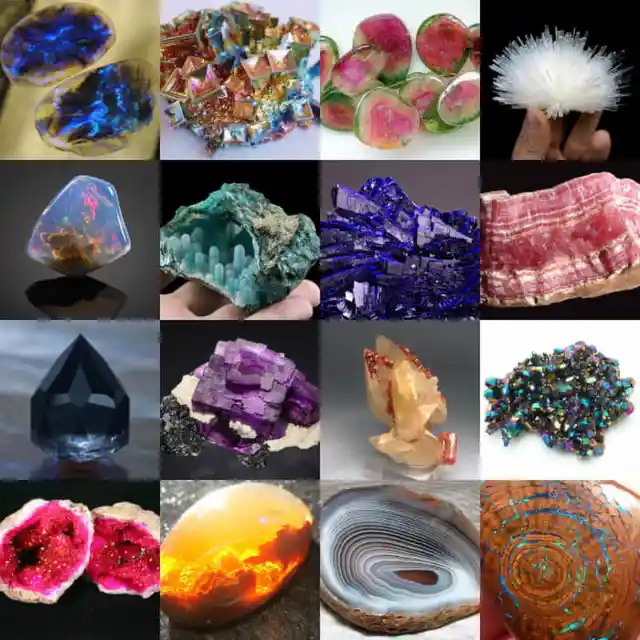
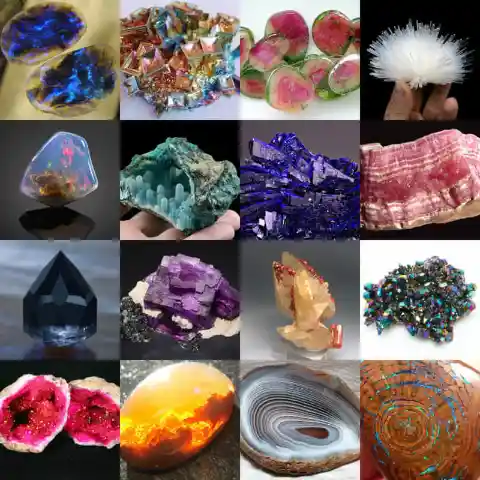
Yes friends, the wedding band is literally just a ploy to sell more diamonds. Let’s look at 21 minerals that are 10000x more beautiful than diamonds!
Being 86% as dense as lead, Bismuth was commonly mistaken for it in ancient times. Consisting of a trippy geometric design straight of out your favorite sci-fi, this brittle metal is very colorful, with colors ranging from yellow to blue.
Lightning Ridge Black Opal
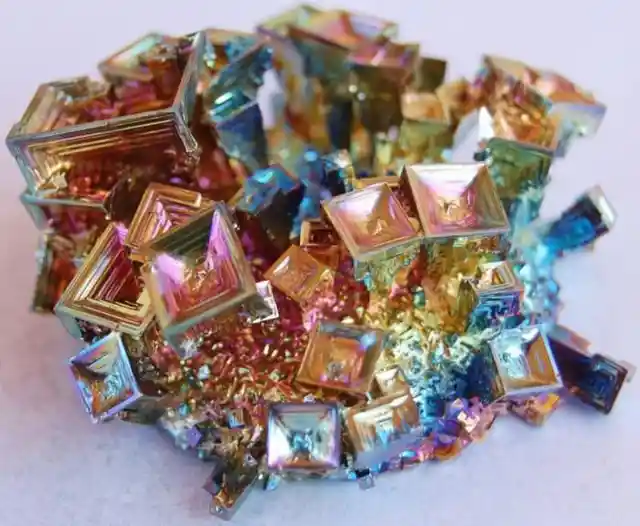
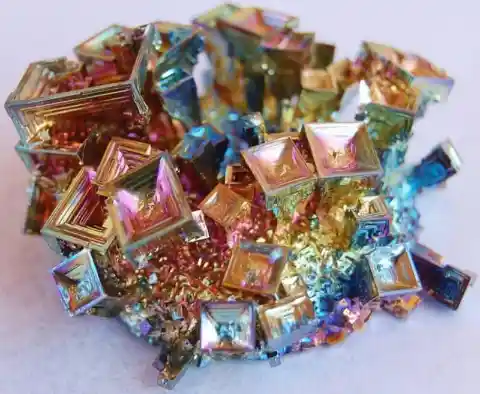
Twice as abundant as gold, this mineral can actually be grown artificially.
This electric looking opal was named after a town in New South Wales in Australia which is the world’s largest known area that contains deposits of black opal.
Chrysocolla in Malachite
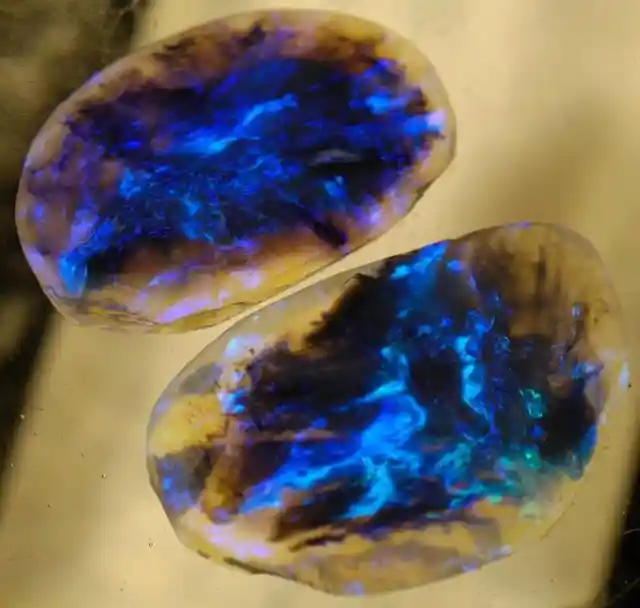
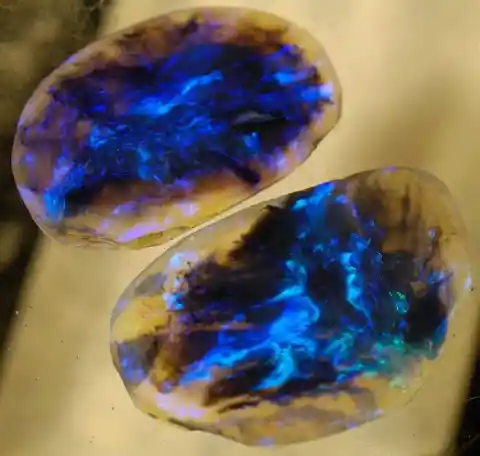
It is Australia’s national gemstone, called “the fire of the desert” by Australians indigenous people, the aborigines.
This quality gemstone is usually formed copper salts, iron and manganese oxides through the oxidation zones of copper ore bodies.
Azurite
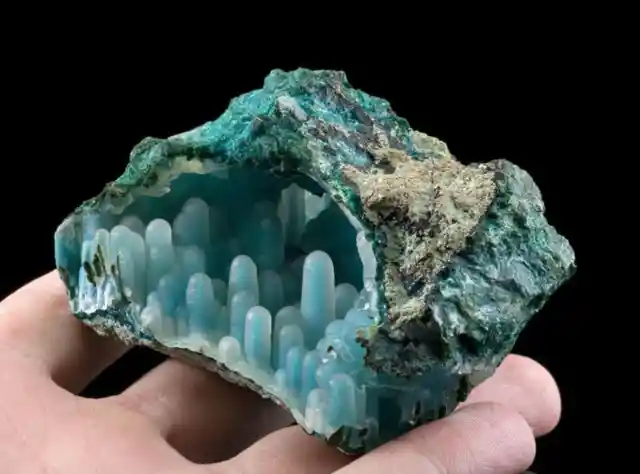
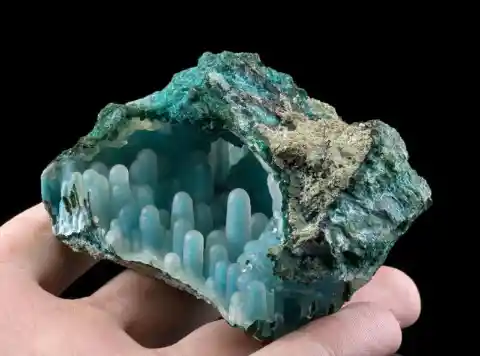
Chrysocolla, although a lesser-Known stone, is absolutely fascinating and one of the most beautiful on our planet due to its amazing patterns in attractive colors.
Also known as the “stone of heaven”, this soft deep blue copper mineral occurs as prisms and crystal masses. It is produced through the process of weathering of copper ore deposits.
Rhodochrosite
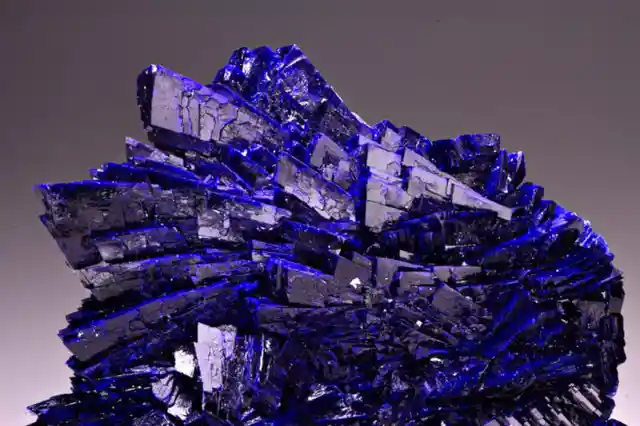
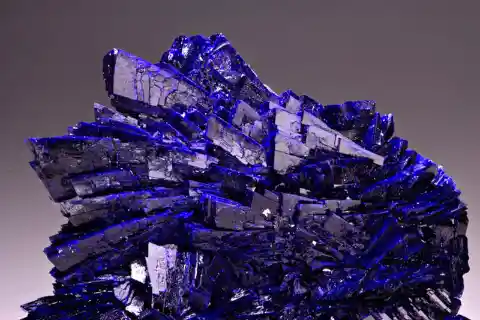
It has been known since ancient times and was first mentioned in Pliny the Elder’s Natural History under the Greek name “kuanos”.
This manganese carbonate mineral is very rarely found in its rose colored pure form, and can be more often seen in shades of pink to brown.
Burmese Tourmaline
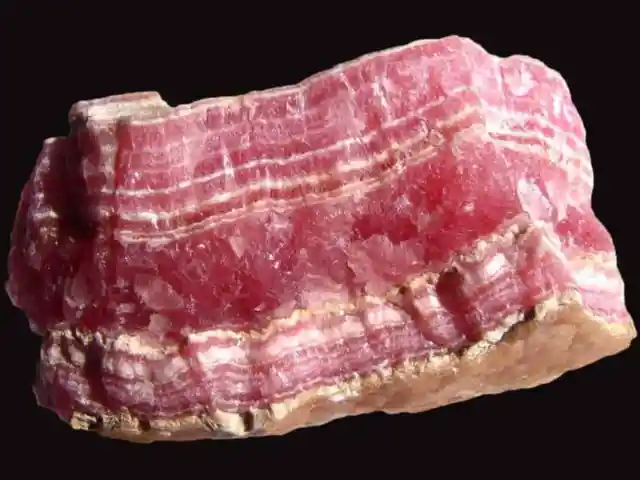
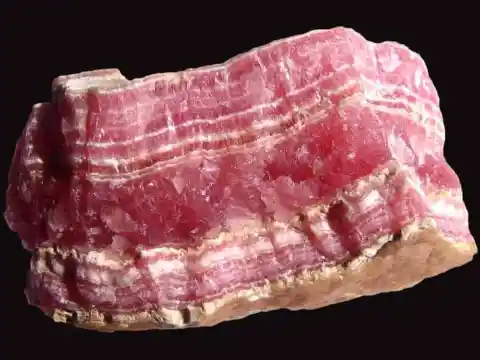
It is commonly used in low-cost stainless steel production, and as jewelry and decorative stone.
Classified as semi-precious stone, tourmaline is a mineral compounded with any of the following elements: iron, magnesium, sodium, lithium, potassium, or aluminium. This shining teardrop can therefore come in a wide array of colors.
Fluorite
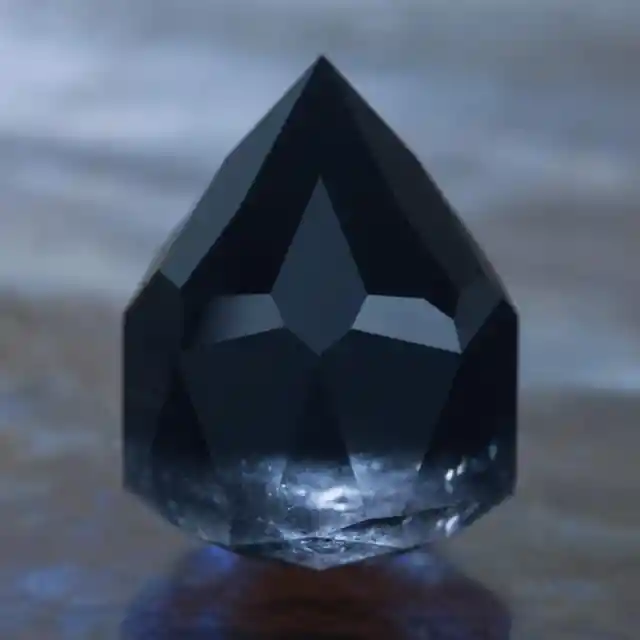
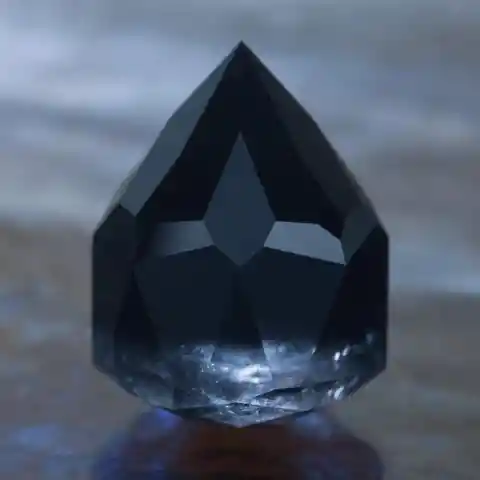
The crystalline boron silicate mineral name actually comes from the Tamil and Sinhalese word “Turmali” which is used to refer to gemstones in Sri Lanka.
Belonging to the halide group of minerals, this majestic purple and black mineral can be used in the production of glass and enamel. Or, you know, as beautiful knick knack.
Opal
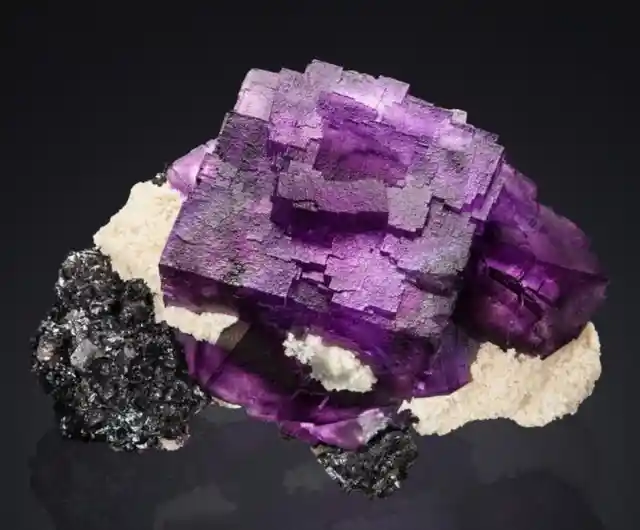
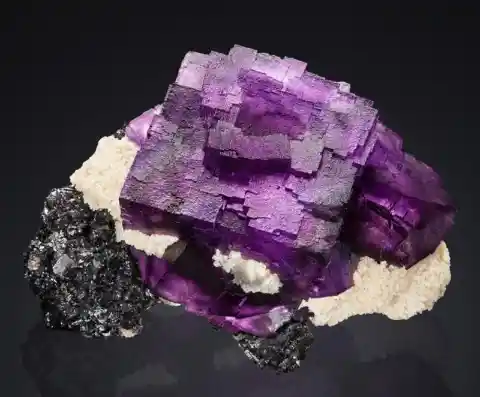
Surprisingly, fluorite is quite common in nature and can be found in over 9000 locations throughout the world.
Able to found in virtually any rock, Opal has mostly been observed in limonite, sandstone, rhyolite, marl, and basalt.
Rose Quartz Geode
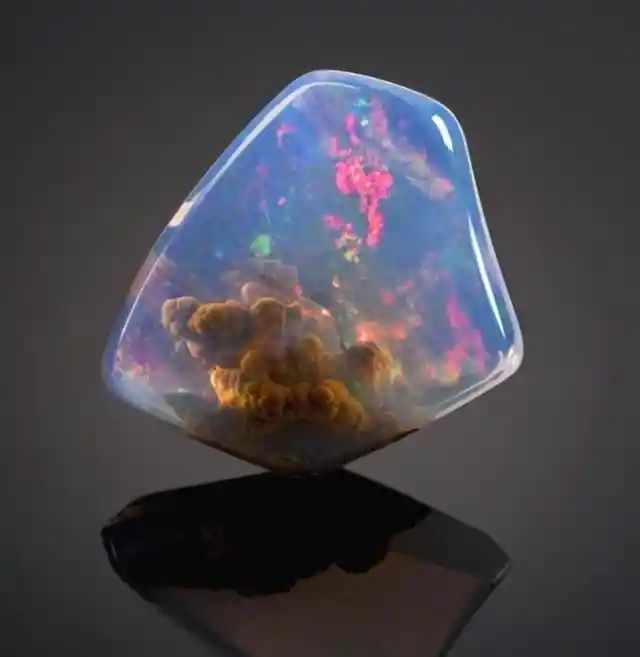
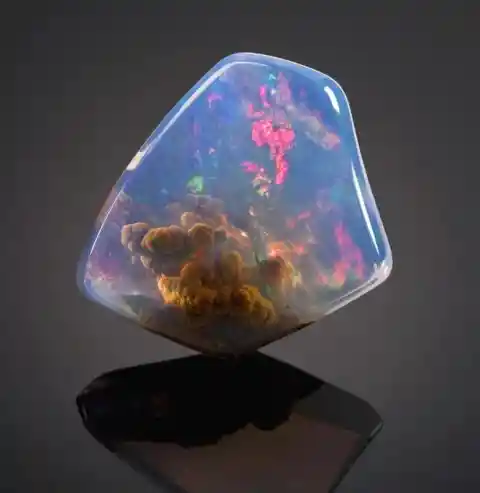
Known for its “galaxy trapping” properties, this hydrated form of silica is deposited at a relatively low temperature.
Quartz Geodes might look plain at first sight, but on the inside they are filled with crystals which form interesting shapes and look absolutely stunning. The name ‘geode’ comes from the ancient Greek language which means ‘shape of the Earth’.
Petrified Opal Wood
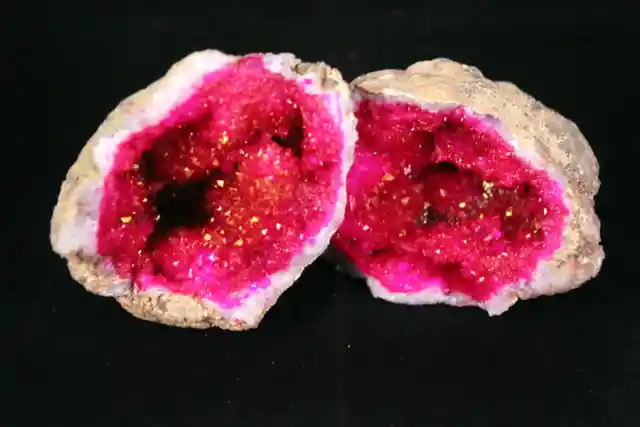
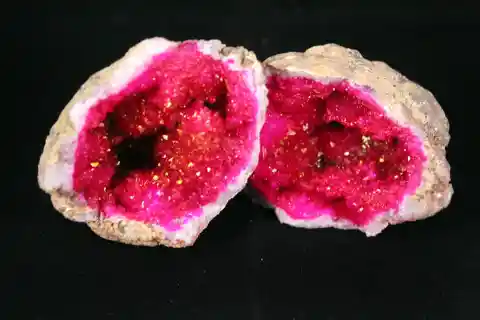
Their size can vary from a couple of feet to a few inches.
The rarest opalized wood in the world probably comes from the Virgin Valley.
Scolecite
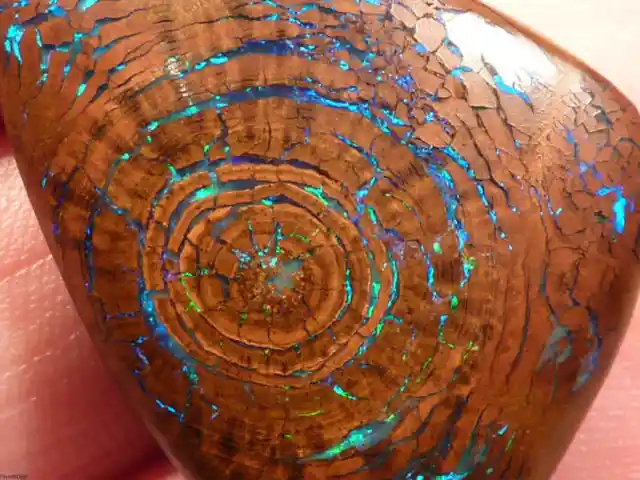
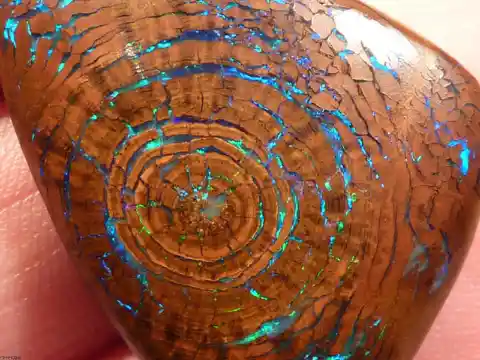
Nevada is home to the rare specimen of petrified fossilized wood which leaves the mind wondering whether it’s actually possible for wood to eat a rainbow.
This stone is commonly found in Iceland and India and is thought to be able to help you communicate with your spirit, as well as create a resonance in your chakras. Its natural color is usually white, but can also be found in pink, red, and yellow shades.
Watermelon Tourmaline
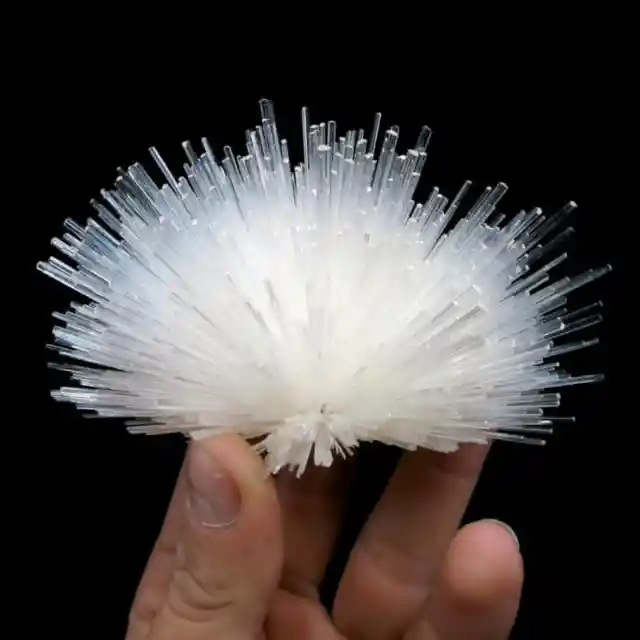
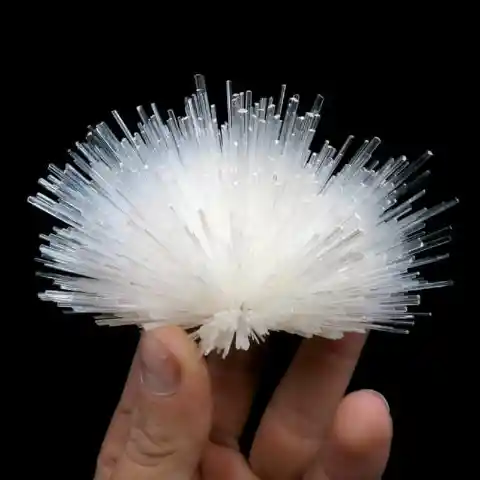
Its form resembles a forest of vertical spikes, or nodules.
Tourmaline is a semi-precious gemstone which can come in a variety of colors, but this particular pattern is created by the high concentrations of Lithium.
Sunset Fire Opal
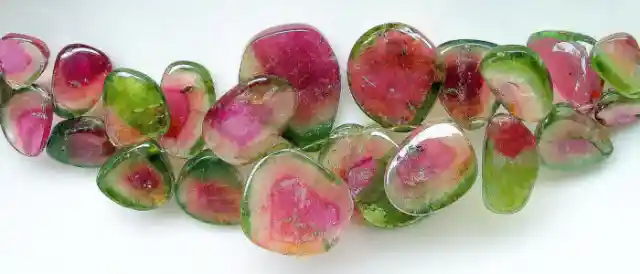
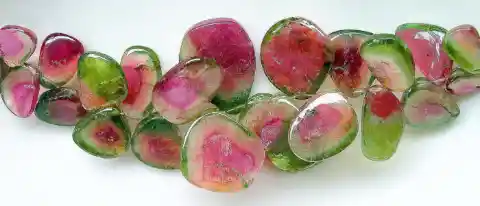
It was most likely created during the development of the gemstone due to the sharp contrasts in fluid chemistry.
If you stare closely in this mineral with enough imagination, you can see all sorts of Earth formations such as clouds, flames, and soil. It is chemically classified as mineraloid due to its amorphous character.
Titanium Quartz
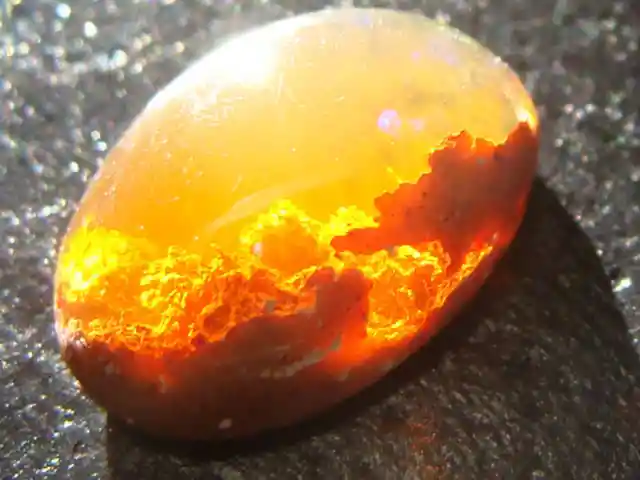
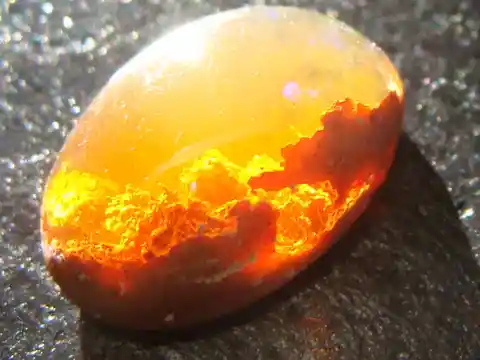
The fire opal is now regarded to be a national gemstone in Mexico, but ever since ancient times, different nations marveled at its beauty and intricate design. We all agree with ancient Persians and Amerindians that this piece of paradise is the perfect way to honor love.
Also recognized under the name Rainbow Flame Aura, titanium quartz is a natural quartz which has been metal-coated through heat infusion in a vacuum chamber. The different selection of coatings that can be used generate a spectrum of colors when the metals bond deeply with the quartz.
Botswana Agate
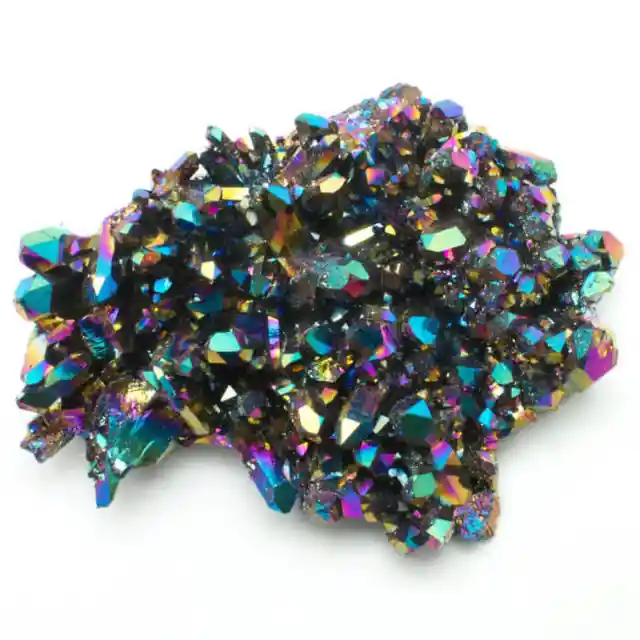
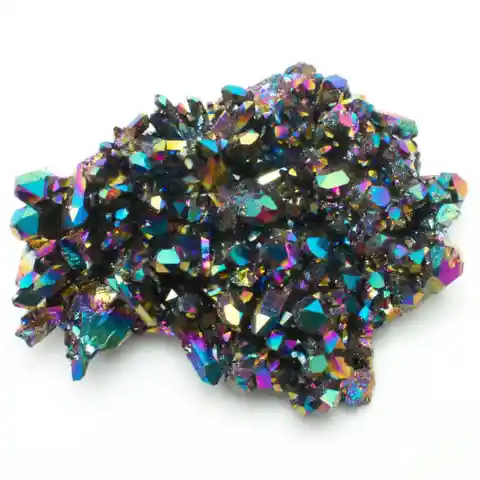
It is thought to have highly energizing properties, and is used for decorative purposes such as jewelry.
Botswana Agate is another mineral in the quartz family. In its design we can see layers of different colors such as: pink, gray, brown, or apricot.
Realgar on Calcite
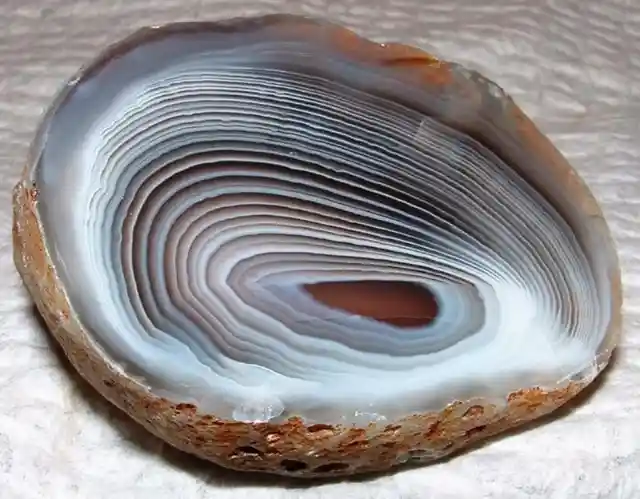
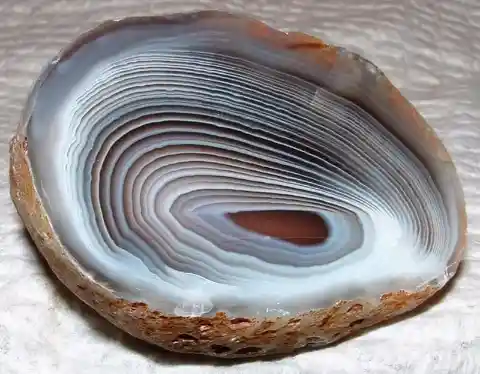
Many people feel that these stones has healing qualities, and find it excellent for balancing different energies. It is named after the area in Africa.
Realgar is a soft arsenic sulfide mineral with an orange-red color which melts at a temperature of 320 °C.
Uvarovite
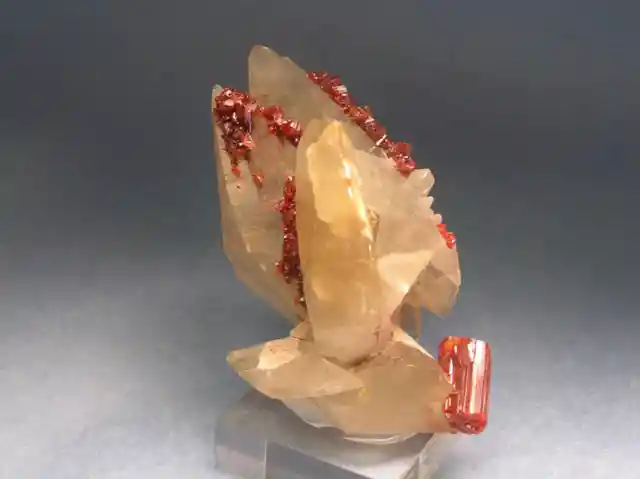
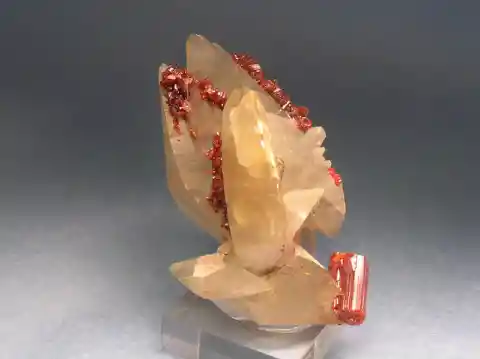
It strongly resembles sulfur in its structure, except for the color which creates a picture of bleeding rock.
One of the rarest of the garnet group minerals, uvarovite with it’s enchanting green-emerald color looks like something that would be in possession of the Wicked Witch.
Fluorite/Quartz/Pyrite Combination
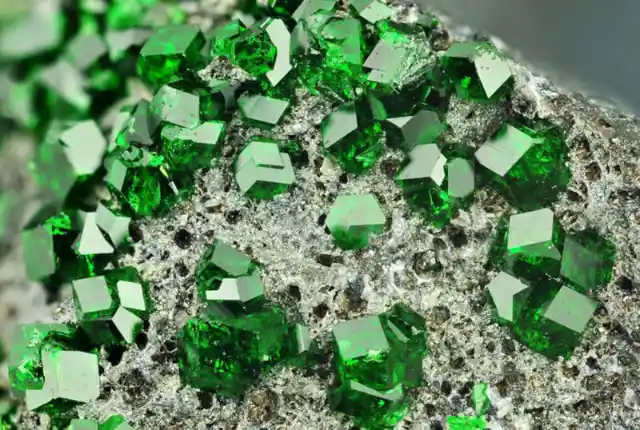
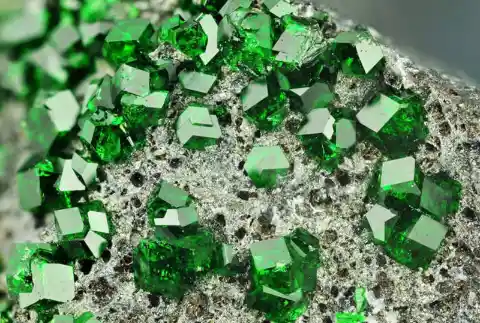
It was named after a Russian amateur mineral collector.
This beautiful mineral looks like there was a shower of gold dust that happened to fall and be captured on an iceberg.
Crocoite
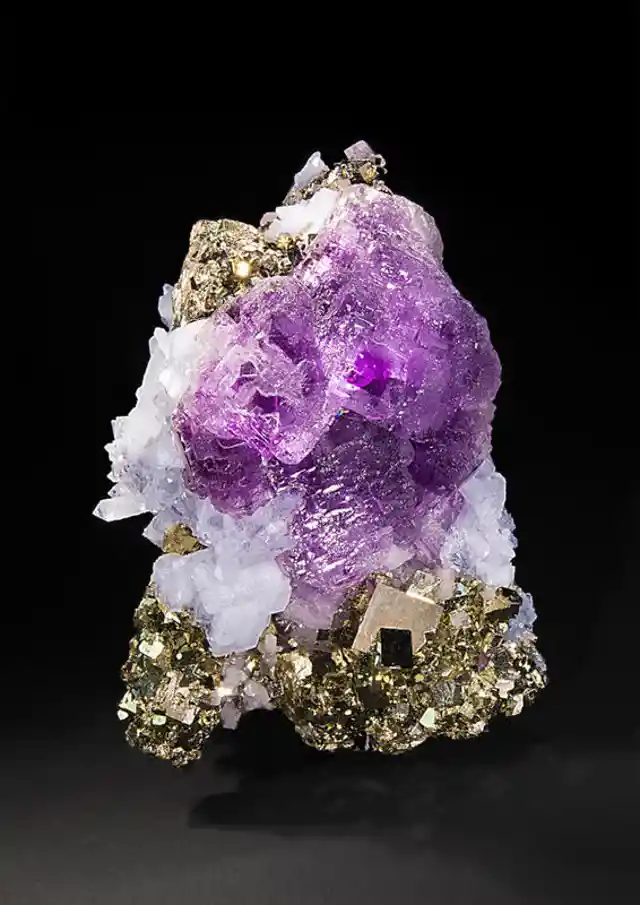
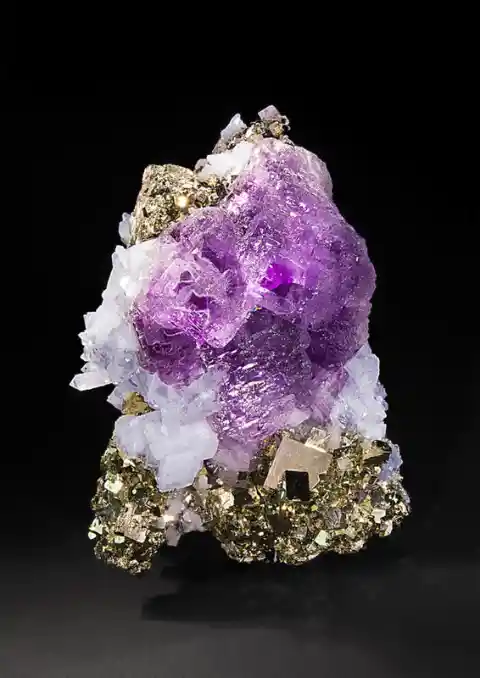
It is an inspiring combination of contrasts.
First found in Russia, and other parts of Europe, crocoite has now been discovered to be abundant on the island of Tasmania.
Cobaltocalcite
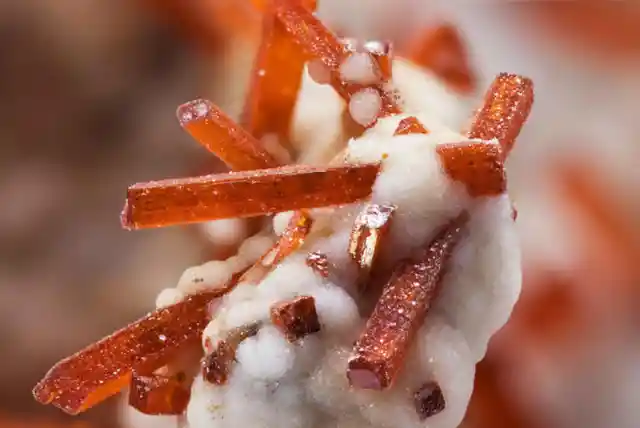
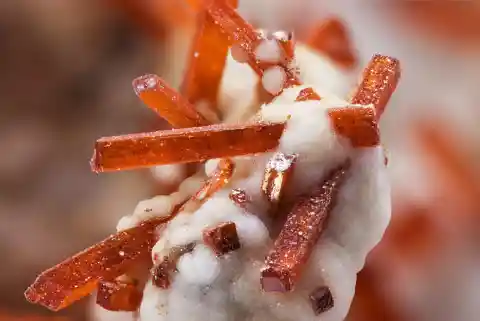
It comes in the form of magnificent crystals consisting of lead chromate.
Resembling a tightly held together bouquet of roses, cobaltocalite is pretty and colored in pale pink due to the presence of cobalt in it.
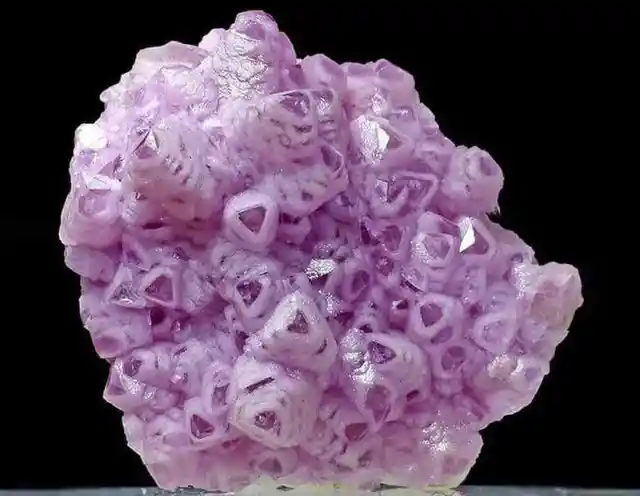
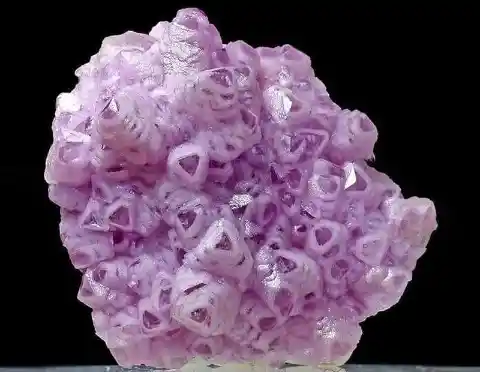
It is thought to be a stone which encourages and aids self-discovery, cherished as a symbol of love and forgiveness.